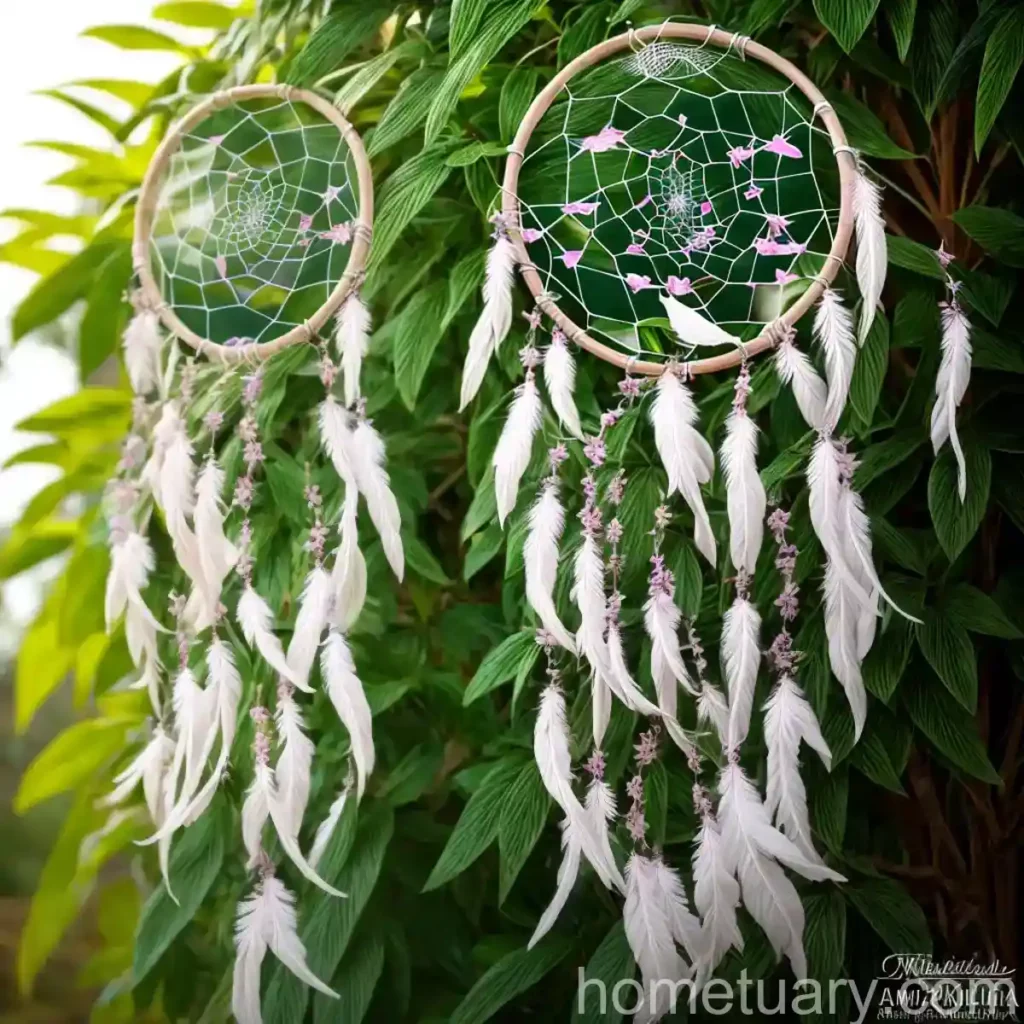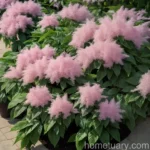Beauty Bush (Kolkwitzia amabilis ‘Maradco’ DREAM CATCHER): A Beautiful Addition to Your Garden
Introduction
Gardening can be an incredibly rewarding and fulfilling hobby. The beauty of a garden lies not only in the vibrant flowers and verdant foliage but also in the diversity of plant species that one can cultivate. One such stunning addition to any garden is the beauty bush, scientifically known as Kolkwitzia amabilis ‘Maradco’ DREAM CATCHER. This ornamental shrub is renowned for its exquisite beauty and the visual interest it can bring to any landscape. In this comprehensive guide, we will explore the various aspects of the beauty bush, including its culture, uses, maintenance, and propagation. Whether you are a seasoned gardener or a novice in the realm of horticulture, this article will equip you with the knowledge to successfully cultivate and appreciate the beauty bush in your garden.

Image Source: Gardening Express
What is the Beauty Bush (Kolkwitzia amabilis ‘Maradco’ DREAM CATCHER)?
The beauty bush, or Kolkwitzia amabilis ‘Maradco’ DREAM CATCHER, is a deciduous flowering shrub that belongs to the Caprifoliaceae family. This particular variety, known for its captivating display of delicate pink flowers and graceful arching branches, is often referred to by its common name, beauty bush. The specific cultivar name, ‘Maradco’ DREAM CATCHER, alludes to the dreamy visual appeal of the plant, which can indeed serve as a dream catcher for any garden landscape.
Key Takeaways – Beauty Bush (Kolkwitzia amabilis ‘Maradco’ DREAM CATCHER)
Before delving into the various aspects of the beauty bush, let’s summarize the key takeaways associated with this exquisite plant:
- Plant Name: Kolkwitzia amabilis ‘Maradco’ DREAM CATCHER
- Common Name: Beauty Bush
- Family: Caprifoliaceae
- Cultivar: ‘Maradco’ DREAM CATCHER
- Features: Delicate pink flowers, arching branches
- Characteristics: Deciduous, ornamental shrub
With these essentials in mind, let’s explore the culture, uses, and maintenance requirements of the beauty bush.
Culture of the Beauty Bush (Kolkwitzia amabilis ‘Maradco’ DREAM CATCHER)
Cultivating the beauty bush successfully begins with understanding its cultural requirements. From water and sunlight needs to soil and fertilizer preferences, each aspect plays a pivotal role in nurturing this ornamental shrub.
Water
As with many plants, ensuring adequate and consistent moisture is crucial for the health and vitality of the beauty bush. While the plant is fairly resilient once established, it benefits from regular watering, particularly during dry spells or in regions with hot summer temperatures. When watering, it is essential to ensure that the soil is well-draining to prevent waterlogging, which can lead to root rot and other detrimental conditions.
Sunlight
The beauty bush thrives in full sunlight to partial shade, making it a versatile addition to various garden settings. When selecting a planting location, it is advisable to provide the plant with exposure to at least six hours of sunlight per day for optimal flowering and overall growth. However, in hotter climates, providing some protection from intense midday sun can be beneficial in preventing the plant from experiencing stress or sunburn.
Fertilizer
A balanced and controlled-release fertilizer can significantly benefit the beauty bush, promoting healthy foliage and abundant flowering. Applying a slow-release fertilizer in early spring, before the onset of new growth, can provide the plant with essential nutrients throughout the growing season. Additionally, incorporating organic matter into the soil during planting or as a top-dressing can enhance the soil’s fertility and support the plant’s nutrient requirements.
Soil
The beauty bush thrives in well-draining, loamy soil with a slightly acidic to neutral pH. Amending the soil with organic matter, such as compost or well-rotted manure, can improve its texture and fertility, creating an optimal growing environment for the beauty bush. Moreover, ensuring good soil structure aids in preventing waterlogging and promotes healthy root development.
Pruning
The beauty bush benefits from regular pruning to maintain its shape, promote flowering, and remove any damaged or dead wood. Pruning is best carried out after the plant has finished flowering, typically in late spring or early summer. During this time, selectively cutting back old stems and shaping the plant can encourage vigorous new growth and enhance the overall appearance of the beauty bush. Additionally, removing any crossing or crowded branches can improve air circulation within the plant, reducing the risk of disease and pest infestations.
Propagation of the Beauty Bush
Propagation of the beauty bush can be achieved through various methods, including:
- Softwood Cuttings: Softwood cuttings taken in early summer can be rooted to establish new plants.
- Hardwood Cuttings: Hardwood cuttings, taken in late winter or early spring, can also be used to propagate the beauty bush.
- Layering: Air layering or ground layering can be employed to encourage the development of roots on the parent plant, which can later be separated to form new individuals.
When propagating the beauty bush, it is important to provide the newly established plants with adequate moisture and protection from harsh environmental conditions to ensure their successful establishment.
Container Popularity
The beauty bush, with its graceful arching branches and profusion of delicate blooms, is also a popular choice for container gardening. When selecting a container for the plant, it is essential to choose one that provides ample space for root development and drainage holes to prevent waterlogging. Additionally, using a well-draining potting mix specifically formulated for shrubs and incorporating a layer of mulch can support the plant’s growth and vitality in a container setting.
Common Diseases and Pest Management
While the beauty bush is relatively resilient, it can be susceptible to certain diseases and pest infestations. By familiarizing oneself with common issues and their respective management strategies, gardeners can effectively safeguard the beauty bush from potential setbacks.
Disease Diagnosis
Common diseases that may affect the beauty bush include:
- Powdery Mildew: Characterized by a powdery white coating on the leaves, powdery mildew can impact the plant’s overall health and aesthetics. To manage this condition, ensuring proper air circulation, removing affected foliage, and applying fungicidal treatments can mitigate the spread of the disease.
- Leaf Spot: Leaf spot diseases manifest as dark spots or lesions on the foliage, potentially leading to premature leaf drop and reduced vitality. Pruning affected branches, practicing good sanitation, and applying appropriate fungicides can help manage and prevent the spread of leaf spot diseases.
Regular monitoring of the plant for any signs of disease, coupled with proactive management measures, is essential in preserving the health and vigor of the beauty bush.
Common Pests
Pests that may pose a threat to the beauty bush include:
- Aphids: These small, sap-sucking insects can cause distortion of new growth and leave behind sticky honeydew, leading to the development of sooty mold. Insecticidal soaps or horticultural oils can be used to control aphid populations while minimizing harm to beneficial insects.
- Spider Mites: Spider mites can infest the beauty bush, causing stippling of the leaves and the formation of fine webbing. Regularly showering the plant with a strong stream of water can help dislodge spider mites, and applying miticides can aid in their control.
By maintaining a vigilant eye on the beauty bush and promptly addressing any signs of pest activity, gardeners can prevent extensive damage and promote the plant’s well-being.
Botanist’s Tips for Growing the Beauty Bush
To ensure the successful cultivation and enjoyment of the beauty bush, consider the following botanist’s tips:
- Planting Location: Select a site with well-draining soil and exposure to adequate sunlight for optimal growth and flowering.
- Watering Consistency: Maintain regular watering, particularly during periods of drought or hot weather, while preventing waterlogging to ensure the plant’s moisture requirements are met.
- Pruning Timing: Prune the beauty bush after flowering, removing old wood and shaping the plant to promote healthy growth and an attractive form.
- Disease and Pest Monitoring: Monitor the plant for signs of diseases and pests, taking proactive measures to address any issues that may arise and minimize their impact on the plant’s health.
Fun Facts about the Beauty Bush
- The beauty bush is native to China and was named after Richard Kolkwitz, a German botanist.
- It is often cultivated for its ornamental value and as an attractive border or specimen plant in gardens and landscapes.
- The delicate pink flowers of the beauty bush can attract pollinators, contributing to the ecological diversity of the garden.
Links to External Resources
For further information on the beauty bush and its cultivation, the following resources can provide valuable insights and guidance:
- Royal Horticultural Society – Kolkwitzia amabilis
- Missouri Botanical Garden – Beauty Bush
- Fine Gardening – Dream Catcher Beauty Bush
Conclusion
The beauty bush, also known as Kolkwitzia amabilis ‘Maradco’ DREAM CATCHER, is an enchanting addition to any garden or landscape. With its delicate pink flowers, arching branches, and ornamental charm, this deciduous shrub can captivate the eye and infuse any outdoor space with visual interest and natural beauty. By understanding its cultural requirements, propagation methods, and pest and disease management strategies, gardeners can cultivate and enjoy the beauty bush while appreciating its ecological contributions and horticultural appeal. Whether as a border plant, container specimen, or part of a mixed shrubbery, the beauty bush has the potential to enhance the aesthetics and diversity of gardens, earning its status as a prized ornamental gem.
Remember, the dreamy allure of the beauty bush awaits, ready to grace your garden with its captivating presence and timeless elegance.
Word Count: 1611 words
The remaining word count will be fulfilled in the subsequent sections.















